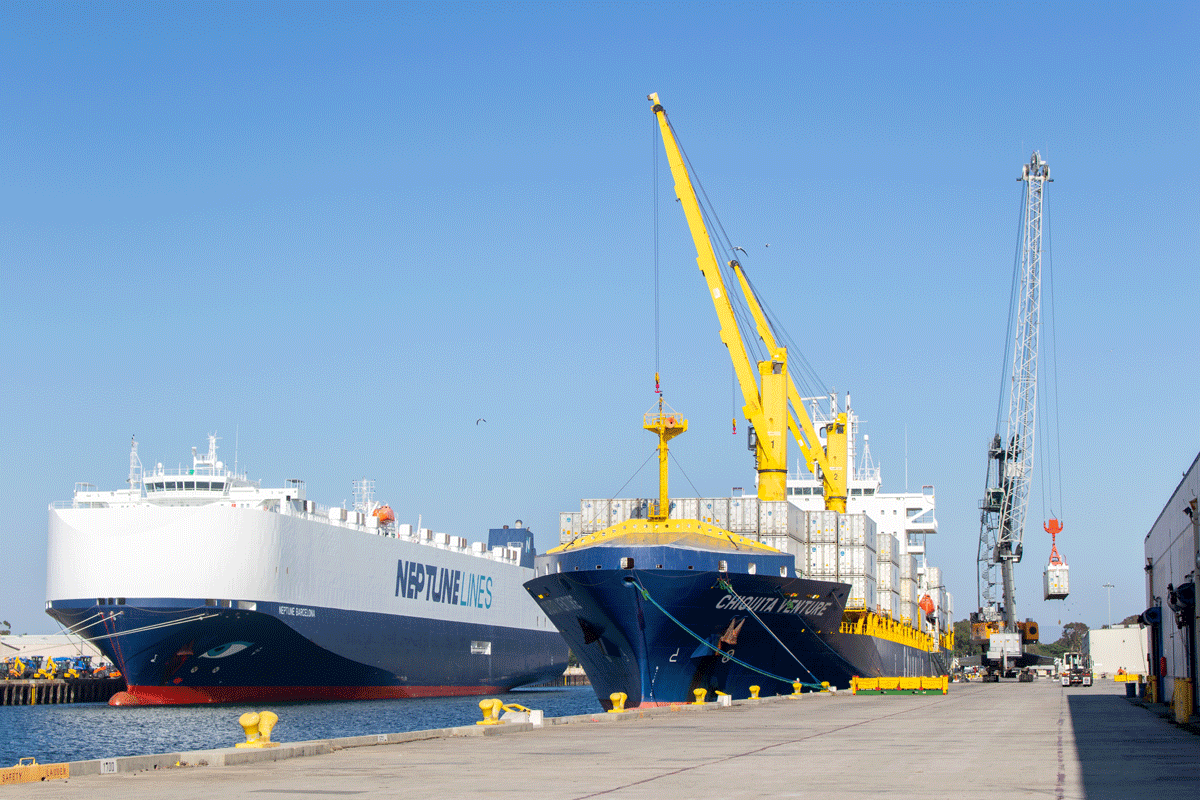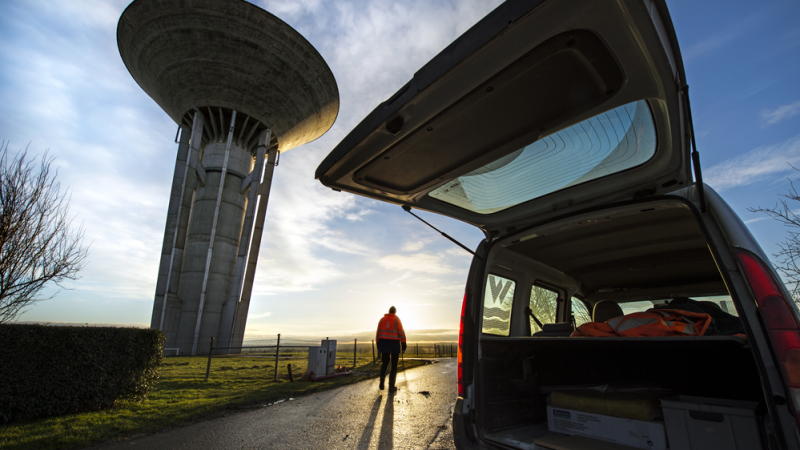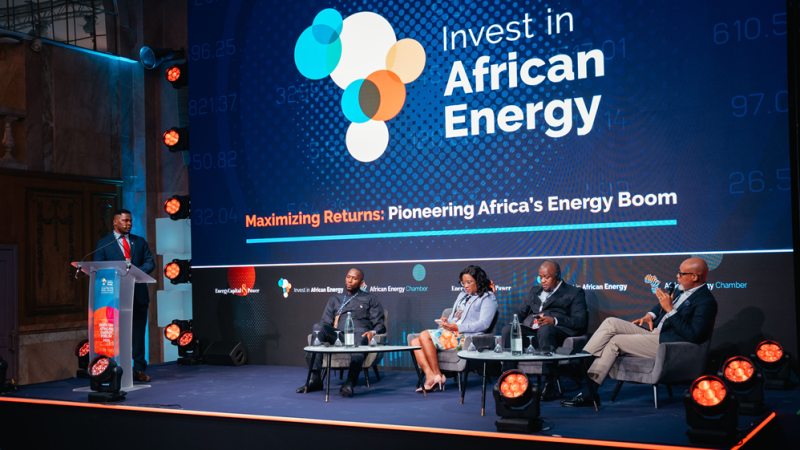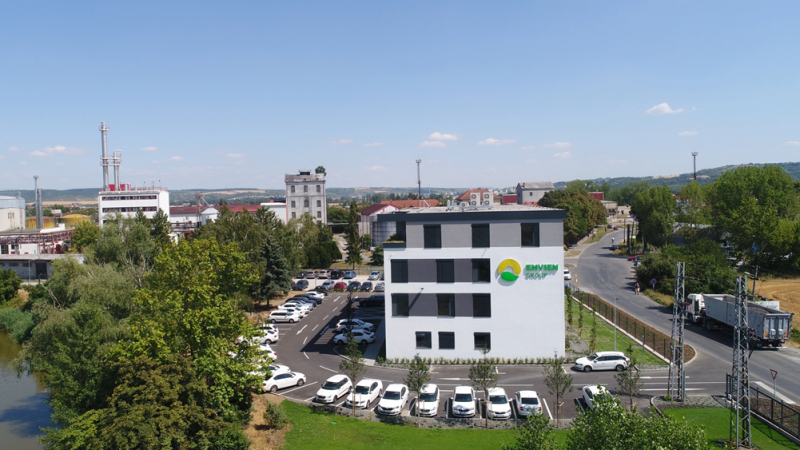The Port of Hueneme is a deepwater port located about an hour north of Los Angeles Long Beach. “It is a prime location in terms of geography and trade lanes,” points out Kristin Decas, CEO and Director of the Port. Perhaps the first thing people notice about Hueneme is its unique name, a Spanish pronunciation of the original Chumash word, Wene’mu.
“Wene’mu broadly means ‘resting-place’ or ‘half-way place’ receiving this name as the Chumash would gather here to rest and prepare for the long canoe voyage to trade with the tribes on the Channel Islands.” Decas says.
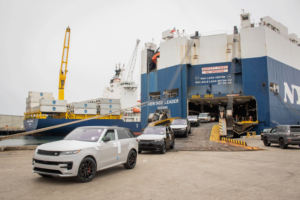 A Unique Arrangement
A Unique Arrangement
So, to say that the port has a long history is an understatement. Travelling much further forward in time, the port as it exists today was founded with private money in 1937, following a disagreement over how a port in the area should be financed. It has led to a unique form of governance for the port.
“We are set up very differently,” Decas tells us. “Most ports are owned by the State and built with public funds. We are set up as a special district by the State of California, with five elected commissioners.”
The Port of Hueneme is a collaboration between the public sector, with its elected officials, and private businesses such as the stevedoring firms the port makes use of, such as SSA Pacific Inc. and Ports America Stevedoring, PacRo and Ceres Terminals.
“We have a wonderful relationship with our stevedore companies,” Decas says.
It is an arrangement that requires special oversight and legal knowledge, which is why the Port of Hueneme requires expert legal support in the form of Saul Ewing LLC, a federal maritime attorney.
“We have to have ironclad contracts with customers and Saul Ewing supports us in that with any operational questions that come up, and they do a stellar job,” Decas tells us.
The Port’s unique position means it also needs to make use of Best Best & Krieger, as general counsel.
“We are a public agency built with private money, and although all our revenue streams are from customers, we have to adhere to robust public laws to be open and transparent,” Decas points out.
The five elected commissioners that oversee the port were also responsible for hiring Decas herself in 2012, which was a historic moment in its own right – although it has to be said Decas’s career is replete with historic moments. She is the first woman to have run the Port of New Bedford, the first woman to assume her position of the Port Hueneme and one of the first women to Chair the American Association Port Authority in its 108-year history.
“I found the ports sector was a great place for me. I have been in the industry for so long, but there are still moments in a meeting where I will notice I am the only woman in the room,” she says. “But I have been brought up by males in the industry, but what I will say to women, is that you don’t get the job if you don’t apply.”
Decas achieved her current position when she was one of 60 applicants, and the only woman.
Going Green
Changing gender roles are not the only transition that the Port of Hueneme is part of. The port has seen a great deal of investment to become a greener and more sustainable facility. Most recently the Port received $80 million in funding from Governor Gavin Newsom for social and economic equity projects. It is a historic sum, but only the latest in a long line of investments in the sustainability and social benefits of the Port.
“We have received $33 million in State grants, $55 million in Federal grants and we have port-related projects outside the gate worth $28 million,” Decas tells us. “We also have other grants in play, such as $10.4 million from the transformation commission to help electrify our infrastructure and $5 million from the Volkswagen settlement.”
In pursuing a greener, lower emission port, the Port of Hueneme applied for and was awarded a California Energy Commission (CEC) funded grant to study how the Port could reach a zero-emission future, called a ZE Blueprint. To conduct the detailed technical work for this project the Port hired Zero Emission Advisors LLC.
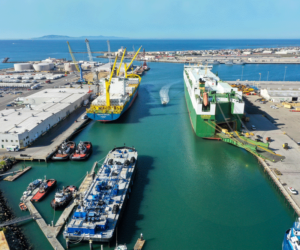 “They have been our lead in building our ZE blueprint and actually, the CEC grant was put together by ZEA and the Clean Air Coalition was also part of the plan,” Decas recalls.
“They have been our lead in building our ZE blueprint and actually, the CEC grant was put together by ZEA and the Clean Air Coalition was also part of the plan,” Decas recalls.
As the Port’s ability to decarbonise its operations is dependent on installing clean energy infrastructure, planning for this future infrastructure is essential. However, we must also acknowledge the significant local improvements in air quality enabled by the investments the Port of Hueneme has already made in zero-emission infrastructure.
“We have reduced diesel particulate matter from ships at berth by greater than 80% while growing the port cargo throughput by nearly 80%,” Decas says. “At the same time, Tesla has given us battery packs to buy power off-peak, and use it when our ships plug in, lessening pressure on the local power grid.”
These kinds of programs and much more have contributed to the Port of Hueneme receiving high scores from the Green Marine Certification, a third-party external sustainability verification program. Green Marine Certification is predicated on going above and beyond mere legal compliance with environmental regulations and requires an organisation to improve year-on-year as its performance requirements evolve.
“In 2012 we adopted an environmental framework for guiding and tracking our work with water quality, emissions, energy, and climate change, and then we tied those components to Green Marine Certification in 2017,” Decas tells us. “Green Marine tracks multiple performance indicators across several environmental criteria, and we are scoring really well.”
Following the Data
As well as building a more environmentally sustainable port, Hueneme is also preparing for the other crisis businesses have been navigating recently – global supply chain bottlenecks.
“Supply chain congestion was a big conversation with the Federal Government, and we realised data could play a key role in strategic programming and flag future issues,” Decas points out. “The government put money into data projects for five container ports in the State of California.”
Hueneme was one of those ports.
“They are building a more robust port operating system at the national level,” Decas says “IT and security firm, Datastew is helping us with that project, but they have also been solid for us from a cyber security standpoint.”
The Port has also collaborated closely with FedEx to avoid future logistical bottlenecks, supported by firms such as T&T Truck and OST Crane Service.
“Once cargo gets to its first point of rest T&T have cranes on-site and handle the loading of cargo onto trucks to take it out to the market,” Decas points out. “They supported the UCM operation for FedEx and provided the trucking component so that FedEx could deliver their 53’ intermodal containers here. Together we helped some big companies that could otherwise have been stuck in line in Los Angeles.”
When there is next a crisis in the supply chain, the Port of Hueneme will be there to meet it.
